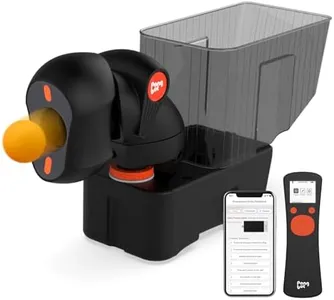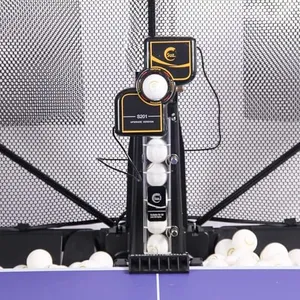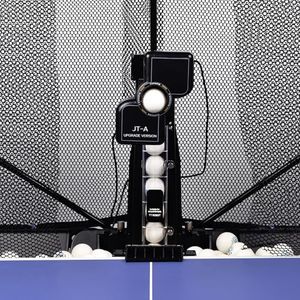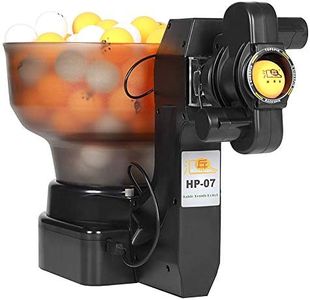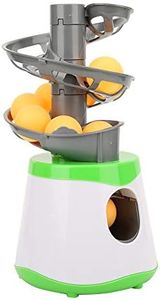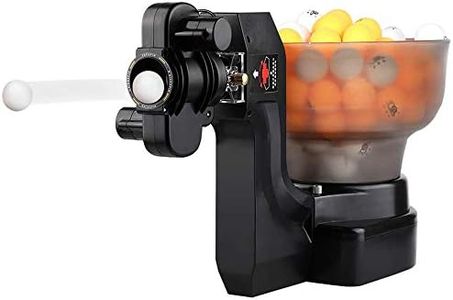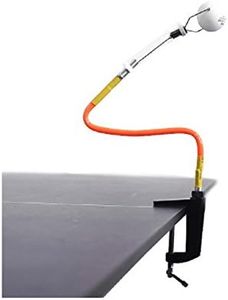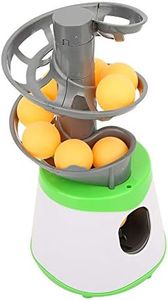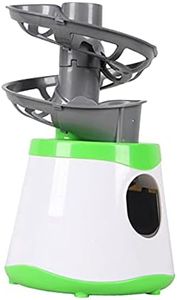We Use CookiesWe use cookies to enhance the security, performance,
functionality and for analytical and promotional activities. By continuing to browse this site you
are agreeing to our privacy policy
10 Best Ping Pong Robots
From leading brands and best sellers available on the web.By clicking on a link to a third party's website, log data is shared with that third party.
Buying Guide for the Best Ping Pong Robots
Choosing a ping-pong robot can be a great way to sharpen your table tennis skills at home. These devices shoot balls at you in various styles, speeds, and patterns, simulating a range of real-life playing conditions. The right robot for you depends on your skill level, practice goals, available space, and the kind of features you want to train with. Understanding the key specs of ping-pong robots will help you match the right product to your needs and ensure productive and enjoyable practice sessions.Ball FrequencyBall frequency refers to how many balls the robot throws per minute. This spec is important as it determines the pace of your practice. Lower frequencies (e.g., 30-50 balls per minute) work well for beginners who need time to adjust, while intermediate or advanced players might seek higher frequencies (e.g., up to 100 balls per minute) to practice quicker rallies or build endurance. Consider what feels challenging but not overwhelming for you, and ensure the robot can operate in ranges appropriate for your level and training goals.
Spin VariationSpin variation indicates the type and amount of spin the robot can put onto the ball, such as topspin, backspin, sidespin, or combinations. This matters because real games involve various spins, and practicing with them improves your ability to read and respond during matches. Basic models may only offer simple spin, which is suitable for fundamental practice, while advanced robots allow for adjustable and programmable spins. If you're just starting, basic spins will do, but as you progress, a model with diverse spin options gives you a more realistic and challenging experience.
OscillationOscillation refers to the robot's ability to move and direct balls to different places on the table automatically. This simulates playing with a moving opponent rather than hitting the same ball over and over. Some robots only fire to a fixed location (no oscillation), suitable for very focused training on one shot. Others can send balls to random or programmable locations, which is better for developing footwork and reflexes. Choose a robot with at least basic oscillation for realistic practice if your aim is to improve overall gameplay and movement.
Programmable DrillsProgrammable drills allow you to set up sequences of balls according to speed, spin, and placement. This helps mimic actual match scenarios or focus on specific skills, like alternating forehand and backhand shots. Entry-level robots may only offer simple, repetitive ball feed, while higher-end models enable custom drills with varying shots. If you’re aiming for structured training or want to work on specific weaknesses, choose a robot with customizable drills; otherwise, simpler presets may suffice for casual play.
Ball CapacityBall capacity is the number of balls the robot’s container can hold at once before needing to be refilled. More capacity means longer practice sessions without interruption. Smaller hoppers (holding 50-75 balls) are lightweight and easy to move, great for short routines or limited space. Larger hoppers (100-200+ balls) suit more intense, continuous training. If you prefer uninterrupted sessions or practice with others, opt for higher capacity; for short bursts or solo use, a smaller hopper may be adequate.
Ease of Setup and PortabilityEase of setup and portability refer to how simple it is to assemble, adjust, and move the robot. Some robots are lightweight and foldable, designed for quick setup and storage, which is handy if you need to clear the space after use. Heavier, more complex robots may take longer to assemble but can be more stable and feature-rich. Consider your available space and whether you'll need to move or store the robot frequently—pick an option that matches your lifestyle and playing environment.
